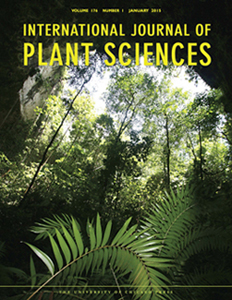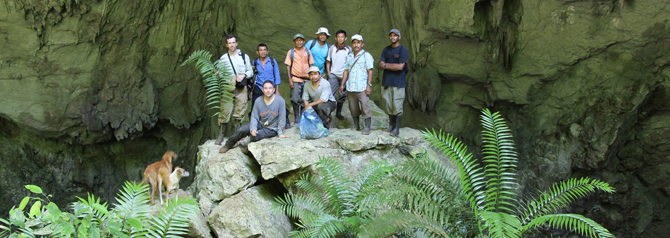Montgomery’s Work Featured in Leading Botany Journal
 MBC fieldwork made the cover photo! The current issue of International Journal of Plant Sciences features the latest research by Montgomery and its collaborators.
MBC fieldwork made the cover photo! The current issue of International Journal of Plant Sciences features the latest research by Montgomery and its collaborators.
The paper, “Can a botanic garden cycad collection capture the genetic diversity in a wild population,” explores how well the collecting protocols at MBC preserve the native DNA in wild cycads. Using the Sinkhole Cycad, Zamia decumbens, as a model, the team compared the genes of the native cycads with those grown at Montgomery.
Michael Calonje, MBC’s Cycad Biologist, led the effort to describe this interesting species in 2009, and is coauthor on the new paper. Michael states, “Zamia decumbens is a fascinating species for this case study because it occurs in dense groups at the bottom of sinkholes and is not found in the adjacent rainforest, allowing us the unique opportunity to sample the genetic diversity of entire populations and compare it to that of seedlings derived from seeds collected in these populations.”
Patrick Griffith, MBC’s Executive Director, and lead author on the study, further adds,
This is a very fundamental question for botanic garden efforts: can we actually conserve plant species via horticulture? The answer is “yes,” if you follow careful guidelines. This is important because it provides an in-depth, scientific perspective to that basic question. Beyond that, what makes this so exciting for me is how we brought a group of experts together – a multi-institutional and international team – and worked together to produce such a useful outcome; our great colleagues made this possible.
The paper involved experts from Belize Botanic Gardens, USDA Chapman Field, and Botanic Gardens Conservation International, as well as MBC. This project was made possible in part by the Institute of Museum and Library Services (MA-05-12-0336-12), SOS – Save Our Species, and the Mohamed bin Zayed Species Conservation Fund. For more information about this conservation project, please see Montgomery’s Collections Genetics page.

